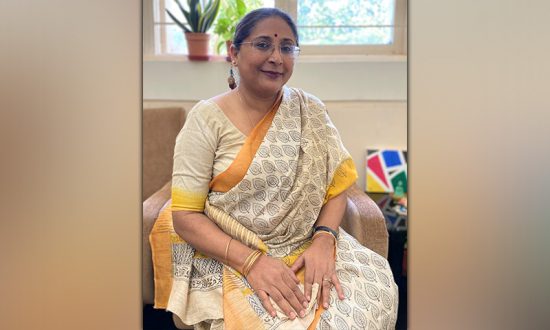Damayanti Bhattacharya is a veteran educator with an experience of over 30 years in the field of education. A qualified Master of English Literature from Calcutta University, Damayanti Bhattacharya also holds a B. Ed degree, is an AP certified teacher as well as an IGCSE certified teacher for Global Perspectives. She taught briefly in 2 schools in Gujarat where she lived for a few years, and after that, she came to Mumbai to further pursue her goal of imparting holistic education in 1994. Ever since then, she has been striving to bring out the importance of character building and overall personality development of the students.
Many people believe that we are currently witnessing the Fourth Industrial revolution. With the emergence of the world wide web and its revolutionary innovations, each and every facet of our lives has evolved immensely. Be it our economy where from the days of a barter system, we have arrived at prompt digital money transfers or our transportation modes which have evolved from bullock carts to self-driven cars, change is palpable in every aspect of our lives. One industry which not only has transformed in itself but also has stimulated the change in other domains is the education sector.
Classrooms and modes of teaching are evolving and upgrading with each year to keep pace with the changing trends of the world. From subject matters to the teaching and learning methods, the entire process of education has seen remarkable advancement. In the coming year, institutions of the world along with educators will experience a significant change in trends, like the following, that will further transform the education industry
Progressive Teaching Techniques
Technology is an innovation of humans, so when an educator can apply technology to teaching, there is an innovation of thought and technique involved as well. The process allows teachers to provide multimedia to address diverse learning styles, such as animation, live video, etc. Besides, it allows teachers to develop online courses where students can learn in their own space and at their own pace.
Synergic Learning
Today everybody is connected to one another due to technology. Teachers connect with Students, discussing while sharing their opinions and acting upon situations collaboratively.
For example, instead of being in a classroom and listening to teachers speak nonstop, students can join an online group/platform and learn together by interacting with their peers. In this case, teachers are more accessible and act as mentors to help students develop themselves. This collaborative learning approach helps students strengthen their interpersonal skills and bridges the gap between teachers and students.
Use of Virtual reality and Augmented reality
Ground-breaking virtual reality (VR) and revolutionary augmented reality (AR) technology are advancing the classroom.
Immersive VR experiences use a VR headset to project images, creating a real or virtual world that users can see and interact with. It also includes gesture controls and easy-to-use teacher controls.
AR, on the other hand, can be accessed simply through a smart device like a phone or tablet and rather than immerse the viewer in another reality, it places these images on top of the real image on the camera. As a simple example, Google search allows you to see different animals in your environment, so you could be looking at a lion sitting next to your desk! Try it yourself by searching for “lion” on your smart device.
These digital technologies will inspire students to think beyond the four walls of the classroom. AR and VR will be successfully utilized for recreating real-life environments and scenarios for practical learning, high-tech training, field trips, virtual labs, etc.
Learning Through Projects
Project-based learning is a teaching method that actively engages the students in real-life projects. The idea is that students ‘learn by doing’, with teachers acting as the hands-on facilitator.
The objective is to help students develop critical thinking, creativity, collaboration and communication skills; all of which are highly sought-after 21st-century skills, valued by employers.
Inclusion of soft skills training in curriculum
A significant education trend in 2021 will be a remarkable shift from subject-based rote learning to more skills-oriented learning methods. Educators are focusing on building the aptitude around critical thinking, problem-solving and management skills of students. The application-based syllabus impels students to apply their learning into real-life scenarios and this is an enormous change from the traditional bookish teachings of schools. Students are acquiring the necessary skills which will enable them to navigate through their career path with confidence as well as facilitate an adept and capable future workforce.
While the overall education trends in 2021 mainly revolve around technological transformation and digitisation of classrooms as well as teaching methods, the educational sector will have a lot more to offer with a broader outreach in the years to come. This will also significantly influence the developments in the professional fields as well. Students who will form the aspiring workforce will undergo holistic development of leadership skills, team-building skills, communication skills through classroom learnings. Following the pandemic, there is an equal emphasis on both offline and online training, to successfully prepare students to face real-world challenges confidently.




